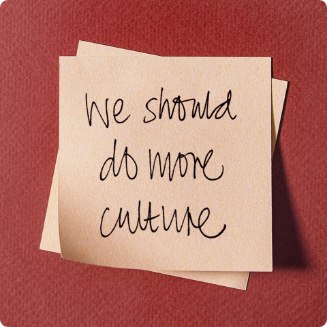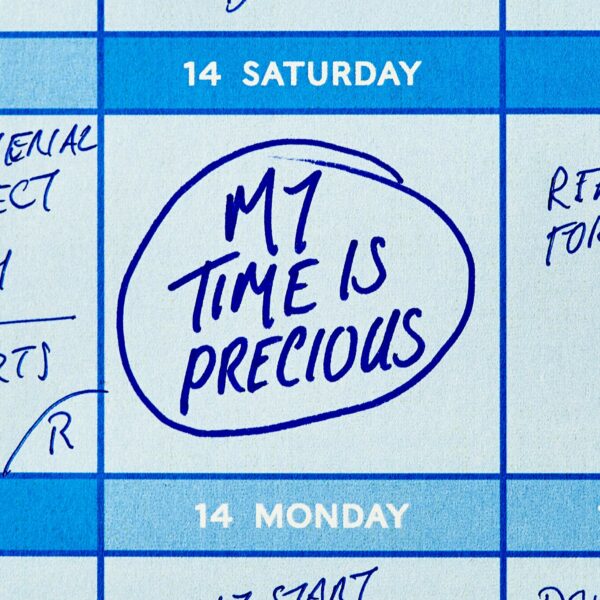- What We Do
- Understanding your audience
- Engaging new audiences
- Designing experiences
- Building loyalty


Culture Segments is a powerful psychographic profiling system that helps cultural organisations build relationships with audiences across every facet of their operation.
We’re a 170-year-old organisation but before 2015 we knew very little about our audiences.
The Shakespeare Birthplace Trust

Why use segmentation?
In an ideal world, we’d speak to everyone
Everyone’s different. Everyone has different needs when it comes to engaging with art, culture, heritage, or history. Every voice, every story, matters. If money, time (and, indeed, practicality) was no object, cultural organisations would speak to everyone in the market to find out exactly what would encourage them to visit and engage with their offer, both now and in the future. Armed with this knowledge, you could craft individual messages, positioned perfectly, to draw them in.
But practicality is paramount
Obviously, no one does this. It’d be prohibitively expensive, as well as impractical and unnecessary. But without some degree of differentiation, we run the risk of treating all audiences, all visitors, all consumers, exactly the same: as regressive an approach as it is crude.
Segmentation is the pragmatic solution
Segmentation, which splits audiences or consumers into different groups based on a variety of factors, offers ‘mass personalisation’: practical, affordable, useful and usable. Segmentation systems are now adopted by many hundreds of arts, cultural, heritage and cause-led organisations across the globe. Culture Segments is the segmentation system designed by MHM specifically to meet the needs of the international arts and cultural sector.
What makes Culture Segments different?
A deep-seated values-based system
Some systems segment audiences or consumers by demographics (if you live in this postcode [zipcode] you’re more likely to visit A, buy B or engage with C), others by lifestage (if you’ve got children under 5 you’re more likely to do X; if you’re retired you’re more likely to buy Y) and others by behaviour (if you’ve done Z in the past you’re more likely to do Z again in the future, or could maybe be persuaded to do A).
MHM’s Culture Segments differentiates people not by where they live, or how old they are, or how many times they’ve booked to see the ballet in the past. Instead, we use people’s deep-seated values and mindsets to help our clients understand their motivations for engaging with arts and culture. Once you understand these, you can craft messages that really resonate. You can build a relationship with people, and take them on a journey with you. You can encourage attendance, broaden your reach, deepen engagement with your offer, and influence behaviour.
Culture Segments, as a psychographics-based system that taps into shared human values to speak to individual human needs, is a system that is both universal and personal.
As applicable to the wider market as it is to current attenders
Culture Segments is a universal system, based on universal, human values and mindsets. For this reason, it works when segmenting the potential market (those that haven’t yet been to an organisation or venue) as well as current attenders. It doesn’t differentiate between those that have or have not yet visited your organisation, as humans don’t fundamentally change their nature after a cultural encounter (although we firmly believe that arts and culture do have the power to change lives!). If you want to grow your audience or attract different audience groups to your ‘usual suspects’, then Culture Segments can help you do that.
Designed specifically to meet the needs of the international cultural sector
There are a lot of segmentation systems out there: some off-the-shelf and cheaper (and usually based on demographics or postcodes [zipcodes]); others bespoke and more expensive (and often based on mindsets or behaviours). In 2010, MHM recognised that off-the-shelf demographics-based systems weren’t working for the cultural sector: arts attendance is deeply discretionary; driven by who we are as humans, not where we live or what we earn as consumers. So we decided to do something about it. Culture Segments – built using representative large-scale datasets of international cultural audiences’ needs, values and preferences – was born: a values-based system designed specifically with the needs (and budgets) of the international arts and cultural sectors in mind.
Works across your organisation, internally as well as externally, in a unified ecosystem
Culture Segments works brilliantly for marketing departments and comms teams: helping you prospect for and reach new audiences and craft resonant messaging that will draw them in. But unlike demographics-based systems that target using postcodes, Culture Segments also gives you the tools to engage people once they’re through the door. Interpretation, membership, fundraising, visitor services and retail teams can use Culture Segments insight to create experiences and offers that meet your audiences’ deep-seated needs, engage them fully, encourage repeat attendance and build both loyalty and long-lasting relationships. Culture Segments not only provides a shared external language for the international cultural sector, it also provides a shared internal language for individual arts organisations to talk about, understand, and meet the needs of their audiences.
Indeed, internally-focused curators, creatives and developers often remark to us that Culture Segments is the first system they’ve worked with in which they can see themselves. It’s credible and resonant for everyone, right across an organisation – with a reach far beyond the marketing department.
Meet the Segments
يتعلم أكثرالجوهر
ESSENCE are core cultural visitors: discerning, confident, independent and arts-essential.
يتعلم أكثرالتعبير
EXPRESSION are people people: committed, generous, creative and community minded.
يتعلم أكثرالتحفيز
STIMULATION love big ideas: they’re active, social, experimental thrill seekers.
يتعلم أكثرالتأكيد
AFFIRMATION like to do the right thing: they’re diligent, cautious and spend their time well.
يتعلم أكثريميل
ENRICHMENT see the present through the past: heritage, tradition, narrative and nostalgia.
يتعلم أكثرالمنظور
PERSPECTIVE are happy in their own bubble: settled, self-sufficient, focused and contented.
يتعلم أكثرمحبي الاسترخاء
RELEASE feel time poor: busy, prioritising, ambitious but seeking escape.
يتعلم أكثرالترفيه
ENTERTAINMENT are looking for fun: leisure opportunities that are mainstream and popular.
Frequently Asked Questions
-
How was Culture Segments made?
The Culture Segments algorithm was originally created with data from a large-scale, fully representative survey of over 5000 cultural consumers across the UK.
Using the respondents’ demographics, motivations, values and preferences and advanced statistical analysis and segmentation techniques, our data scientists identified eight clusters whose behaviour, preferences and motivations were sufficiently distinct to be classed as a specific segment.
-
How can you tell someone’s values from only 10 questions?
We identify someone’s Culture Segments using 10 ‘Golden Questions’. You can see them in action here. The simplicity and speed this offers brings big benefits to organisations looking to segment their audiences without adversely affecting the visit/online experience.
But can only 10 questions really determine someone’s deep-seated values and attitudes to culture? Simply put: yes! When creating the segmentation algorithm, we arrived at the eight segments using many more questions than 10. But an iterative process of robust statistical analysis and experimentation enabled us to arrive at the smallest set of questions necessary to ensure accurate segmentation.
-
How can there only be eight types of people in the world?
Segmentation – as a process and a tool – is pragmatic. It offers a useful compromise between talking to everyone (inefficient one-to-ones) and assuming everyone is the same (ineffective one-size-fits-all).
We’re not suggesting that there are only eight types of people in the world. But people in the same Culture Segment do share huge amounts in common and there are many factors that make them distinct from other segments.
-
Do people’s Culture Segments change over time?
People’s deep-seated cultural values are much slower to change than demographics such as age, family circumstances or pay grade. You may have had a baby or moved house but the reason you want to engage remains relatively stable.
For example: 92Y in New York segmented 4.4k people in their database. They repolled them five years later and found that just 10% had changed segment: and it’s possible these 10% were on the cusp between two segments in the first place.
-
Can people be in more than one Culture Segment?
Our research consistently shows that most people are significantly more like one segment than another. But occasionally someone is on the cusp between two segments. It takes more than a small change in answers for the algorithm to move segments – but this can happen and someone may find they get different outcomes from the questions.
We like to think of Culture Segments as constellations. The Golden Questions allocate people into the Culture Segment with which they are most aligned. If they share characteristics with more than one segment – double bonus – your targeted communications for either of their segments is likely to resonate with them at some level.
-
How often do you update the system?
Our knowledge of the Culture Segments is always growing. Since the initial segments were devised they have been comprehensively tested and retested in the field. Over the past decade, hundreds of thousands of people in dozens of countries have completed the golden questions. In addition, we regularly add nuance to our understanding of the segments with questions on evolving issues such as digital habits, the environment and approaches to Covid risk.
-
What countries does Culture Segments work in?
We are acutely aware of how a community’s history, politics, religion and social structures can influence how culture is created and experienced, and how different locations may face unique and different barriers to cultural consumption.
In our experience, while the proportion of the population in each segment may differ from country to country (many more Americans than Brits are Expression, for example), the values the segments are based on remain true no matter where in the world you are.
Our evidence is based on large scale Culture Segments studies carried out across the world – including in the UK, USA, Sweden, Norway, Australia, New Zealand, China, Brazil, Germany, Indonesia, South Korea, Jordan, Malta, Turkey and Israel.
We are confident in saying that the Culture Segments are universal.
-
How can ‘Culture’ Segments also be relevant for heritage and zoos?
We take a very broad – as broad as we can make it – definition of culture. For MHM, culture is a video game. It’s a football match. It’s standing on the mounds and ditches of a motte-and-bailey castle and imagining the past. It’s engaging with a zoo’s conservationist vision. It’s the buzz of waiting for the curtain – any curtain – to rise.
We know that cultural engagement is a discretionary activity. We choose to do it. That’s as true for a visit to a gig, a castle or a stately home as it is to a theatre performance or museum. Culture Segments is, at its heart, all about people’s deep-seated motivations for taking part in discretionary activity.
So we could have called it ‘Culture/Arts/Heritage/History/Music Segments.’ But that was a bit of a mouthful.
-
How can an off-the-shelf solution work for my unique organisation?
Your organisation may be unique but you share your potential audience with every other venue or activity in your market. Culture Segments works in two ways to help you understand that audience:
- It evaluates the whole culture market for your area, giving you essential insight into its size and your opportunities for growth
- It characterises the needs and motivations of those within the market who are most likely to connect with your brand or cause – your audience – enabling you to reach out to them more effectively.
Sometimes, an organisation may decide to use a different name for the segments so they are more recognisable to their internal stakeholders. This can be a useful, cost effective compromise that feels bespoke without the need to duplicate the market research we’ve already undertaken
-
How can I use Culture Segments to reach different demographic groups?
It can be tempting to seek out a segmentation system that defines audiences by their demographic characteristics, particularly if it promises to tell you where they live and what social media channels they use. But, there’s an obvious problem with this type of segmentation. Even siblings often have different cultural needs so why assume neighbours, or class mates or work colleagues will share theirs? These hypotheses are worryingly broad brush.
Instead, Culture Segments advocates looking first at WHY your audiences engage with you and using that to identify who within your target demographic might also be a potential audience for you. Additional research and Audience Atlas data can pinpoint barriers to engagement specific to your organisation.
For a more detailed explanation take a look at Lorna’s article here. -
Does Culture Segments work for digital audiences?
Absolutely. Just as with in-person experiences, we found the different Culture Segments approach digital content with a specific purpose or mindset. We have clients whose web navigation and content has been tailored specifically to the segments they know use those parts of the site most.
-
How does Culture Segments work with other segmentation or audience prospecting systems?
Culture Segments has mirror segments in the huge TGI consumer dataset. In fact, we created Culture Segments using a large number of TGI attitudinal statements, with advice from Experian (which owns TGI) as we were doing so. This means that if you, or your media buying agency, are using TGI for marketing placement, then Culture Segments works natively within it.
However, Culture Segments doesn’t work with geo-demographics or household-typology-based systems like Acorn or Mosaic. We firmly believe that the size of your house (or your household income) does not determine what culture you engage with.
-
I have a small team and limited resources. Will using Culture Segments mean a lot of extra work for me?
Using Culture Segments can help your team work more effectively, with greater confidence, and for better results. So the short answer is no.
Most clients find Culture Segments simplifies the creative decision-making process. They get to know their target segments really well and find it easier to know what engagement techniques work best.
Even clients such as Tyne & Wear Archive and Museums, who create tailored copy for all eight segments, can increase engagement across the segments with something as simple as changing the email title.
أضف تفاصيلك أدناه
Get Started with Culture Segments
We offer training to use Culture Segments in your programming and product development, your services, your brand and your communications. Ultimately, we can build completely bespoke Culture Segment profiles for your organisation. If you want to fully understand your existing audiences and to reach out to new ones, you need Culture Segments.
- Engaging new audiences
- Understanding your audience








